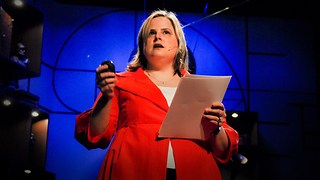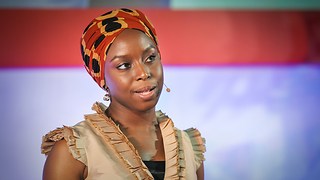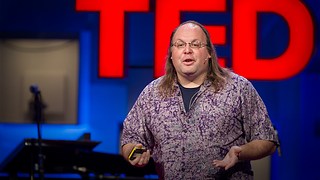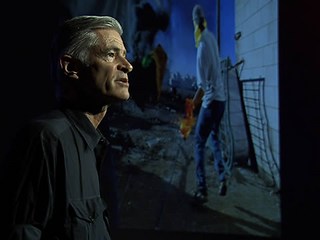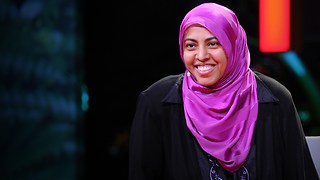Introductory essay
Written by the educators who created Covering World News, a brief look at the key facts, tough questions and big ideas in their field. Begin this TED Study with a fascinating read that gives context and clarity to the material.
At the newsstand, on our smartphones and while watching the evening news, we learn about faraway people and places from the journalists, stringers and correspondents who work for news agencies and other media outlets around the globe. Global news is everywhere — from the front page news read by a New Yorker on Madison Avenue to the government radio station broadcasting in Pyongyang.
However, it would be a mistake to consider this a completely new phenomenon or to overstate its pervasiveness. Many people tend to think that global news is both a recent phenomenon and one that we can credit to advances in technology. If we think of 'news' in terms of newspaper articles or television reporting, then news is only as old as the technologies of press and video, and dates back to the first newsletters that circulated in Europe in the 17th century.
But in reality, humans have shared information about current affairs within and across borders for thousands of years, starting with the news networks of the ancient Phoenicians. The historical record also describes merchants sharing political news along ancient trade routes, minstrels and other traveling artists whose fictional performances also carried information about social change, and criers in medieval town squares.
If news is not a product of modern technologies, it's nevertheless true that technological change has had a dramatic impact on how news is made and consumed: where once we had printed newsletters distributed twice a day, now we have Twitter feeds refreshed twice a minute, and carrying information from an ever-widening array of sources. We live, as media critics like Marshall McLuhan have argued, in a global village.
The trouble with this vision of 'global news' is that it's not nearly as complete as we imagine it to be. According to the World Bank, of the world's seven billion people, only 80% have access to electricity (or the gadgets like computer and televisions that depend on it), 75% have access to mobile phones, and a meager 35% to the Internet. Most people on the planet aren't connected to what we think of as the 'global media' at all. As Global Voices founder Ethan Zuckerman points out in his TED Talk, "There are parts of the world that are very, very well connected, [but] the world isn't even close to flat. It's extremely lumpy."
Just as critically, the content that makes up the 'global media' is still heavily focused on a few key centers of power. In her TED Talk, Public Radio International's Alisa Miller shares a powerful map of the news consumed by American audiences in 2008: most of it focused on the U.S., and to a lesser extent, on countries with which the U.S. has military ties. Ethan Zuckerman points out that this lack of global coverage is pervasive, whether it's at elite news outlets like The New York Times or on crowdsourced digital information platforms like Wikipedia.
Moreover, Zuckerman argues, it's not just about the stories that get made — it's about what stories we choose to listen to. Thirty years ago, Benedict Anderson made waves when he argued that political structures (like states) depend upon a set of shared values, the 'imagined community,' and that the media plays a key role in creating those values. Zuckerman, however, argues that in today's world the disconnect between what we imagine to be our community, and the community we actually live in, is a major source of global media inequality. We connect to the Internet, with its technological capacity to link up the whole world, and imagine that we live in a global village. But in practice, we spend most of our time reading news shared by our Facebook friends, whose lives and interests are close to our own. Zuckerman calls this 'imagined cosmopolitanism.'
Compounding the problem, the stories we do attend to can be heavily distorted, reducing whole countries or societies to a single stereotype or image. As author Chimamanda Ngozi Adichie explains in her TED Talk about the 'single story,' when all the tales we hear about a country follow the same pattern, we begin to imagine that this pattern is all there is know. The 'single story' can affect all of us, rich and poor: Adichie talks of her own misconceptions about Nigeria's rural poor, of her surprise at encountering the diversity of life in Mexico, and of her college roommate's reductive vision of Africa as poor and underdeveloped. The difference, she argues, is that there are simply more stories out there about powerful countries than about less powerful ones, and that makes it harder for us to reduce those societies to 'single stories' in our minds.
What can we do?
First, we can tell different stories about the places that are prone to reduction. In her TED Talk, Yemeni newspaper editor Nadia Al-Sakkaf takes us to the Yemen she lives in — where terrorism and political upheaval are real problems, but far from the whole picture. Moreover, in her account, each image can tell many stories. A woman with a veiled face can represent the role of fundamentalist Islam in Yemeni society, but she argues that a look behind the veil shows us that many of these women are holding down jobs and earning income, and in so doing, changing their role within their own families and in Yemeni society more broadly.
Second, we can find ways to invest in journalism. As Alisa Miller argues, a major obstacle to a truly global news media is the cost of production, of keeping bureaus in every country and paying for journalists to produce deep, investigative stories. The great paradox of media economics in the digital age is that the Internet makes it possible for us to consume more content, but falling advertising revenues means that each piece of content must cost a little less to produce. That pushes news outlets, even wealthy ones, in the direction of gossip and regurgitated press releases that can be produced by a reporter who hasn't left her desk.
One way to break this cycle, Ethan Zuckerman argues, is to make small and targeted investments in local journalists in the developing world. He describes a blogger training program in Madagascar that became a newsroom overnight when world media outlets needed verified content from a country undergoing revolution. He highlights the critical work of professional curators like Amira Al Hussaini at Global Voices or Andy Carvin at the Associated Press.
At the heart of these recommendations is a shift in the way we understand the mission of journalists — or rather, a return to an old way of thinking about news.
Right up until the early 20th century, all journalists were assumed to be opinion writers. Reporters went places to report, made up their own minds about a topic, and wrote an account that included not only facts, but an argument for what position readers at home should take and what political actions might follow. George Orwell's colorful and opinionated essays from South East Asia, for example, were published as reportage.
Then the Cold War started, and in the democratic West, journalists began to strive for objective impartiality, to distinguish their work from the obvious, state-sponsored propaganda of the Soviet bloc. Many critics at the time questioned whether 'true' objectivity was possible, but no major western news organization disputed that it was the ideal.
Today, we're seeing a return to the older understanding of journalism, towards an acceptance that even independent reporting carries a viewpoint, shaped by the people who produce it. Moreover, contemporary journalists are increasingly coming to see this viewpoint as a strength rather than as a weakness, and using social media to be more transparent to readers about the values they bring to stories. New York University's Jay Rosen, for example, has argued powerfully that the 'view from nowhere' advocated by 20th century western reporters is dangerous because it can lead journalists to treat 'both sides' of a story equally even when one side is telling objective falsehoods or committing crimes.
Many of the speakers in Covering World News describe their journalism — whether it is Global Voices or the Yemen Times — as having an explicit moral and political mission to change our perceptions of under-covered regions of the world.
But no speaker is more passionate on this subject than TED speaker and photojournalist James Nachtwey, who credits the activist context of the 1960s for inspiring him to enter journalism, using photography to "channel anger" into a force for social change. Nachtwey's work has brought him, at times, into partnership with non-profit aid organizations, an alliance that is increasingly common in today's media world but would surely not have fit within the 'objective' media of a half-century ago. Nachtwey sees himself as a 'witness' whose place in the story is not to be invisible, but to channel his own humane outrage at war or social deprivation in order to drive social and political change: in one case, a story he produced prompted the creation of a non-profit organization to collect donations from readers.
This kind of work is a form of 'bridge building,' a theme that emerges in many of our talks. For while there may not be one 'global media' that includes all communities equally and reaches all parts of the globe, there are many individuals whose skills and backgrounds enable them to go between the connected and less connected pockets of the world, bridging gaps and contributing to mutual understanding. That, perhaps, is the way forward for international journalism.
Let's begin our study with Public Radio International CEO Alisa Miller, an ardent advocate for a global perspective in news programming. In her TEDTalk "The news about the news," Miller shares some eye-opening statistics about the quantity and quality of recent foreign reporting by American mainstream media organizations.
Relevant talks
